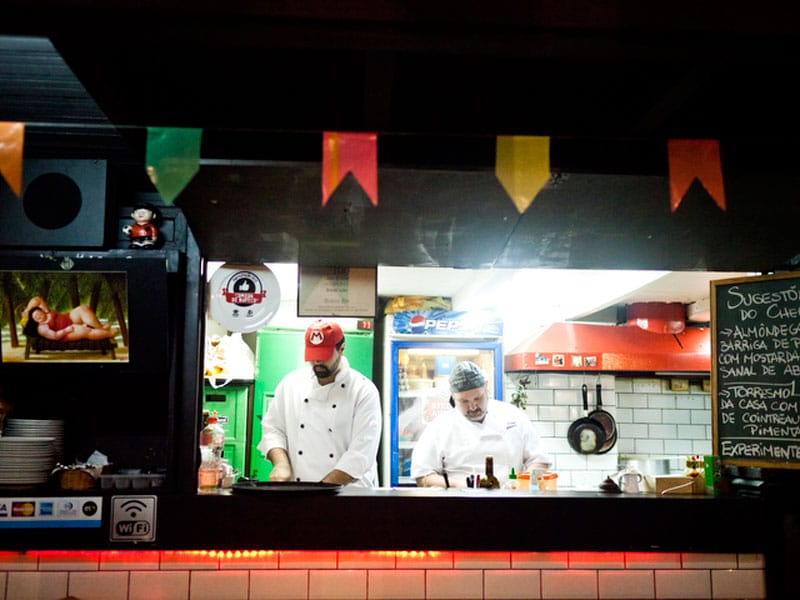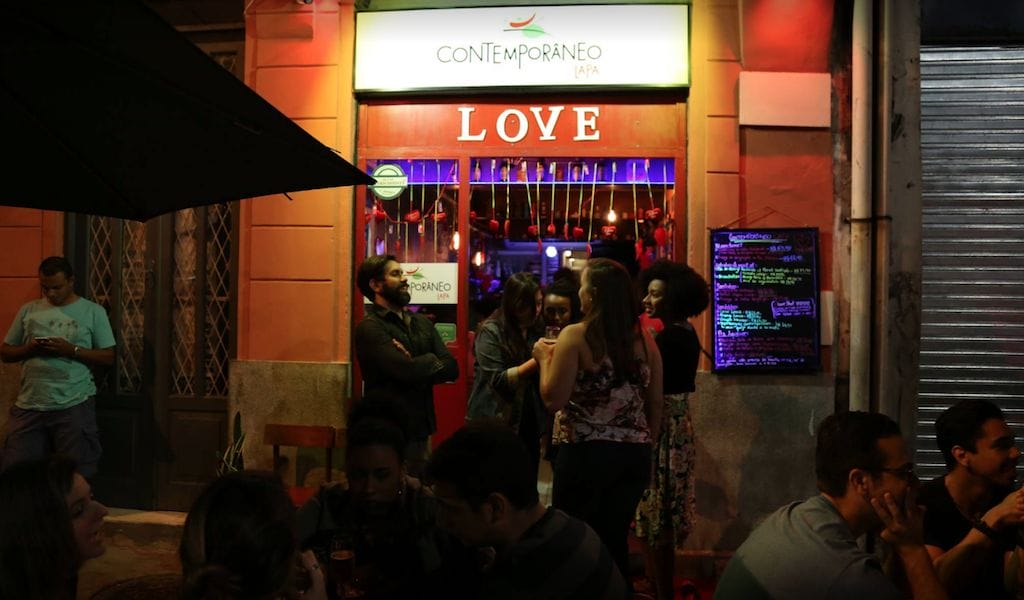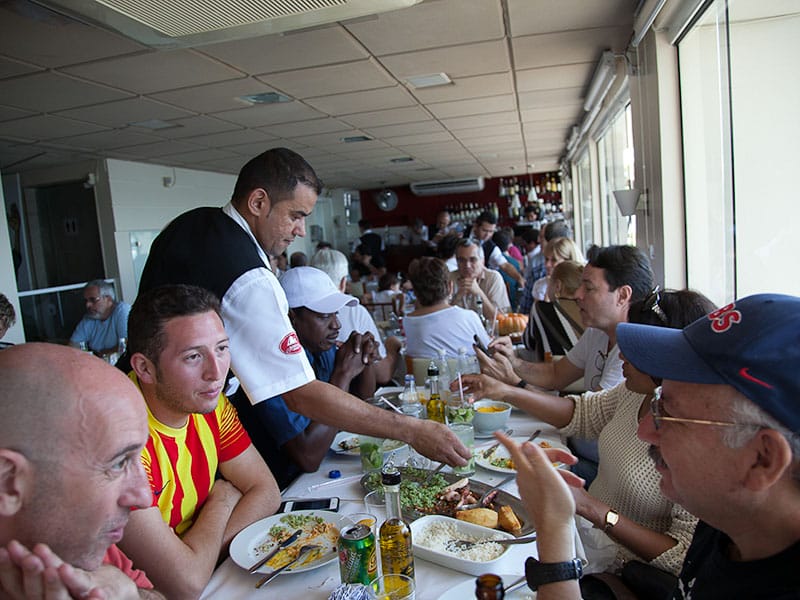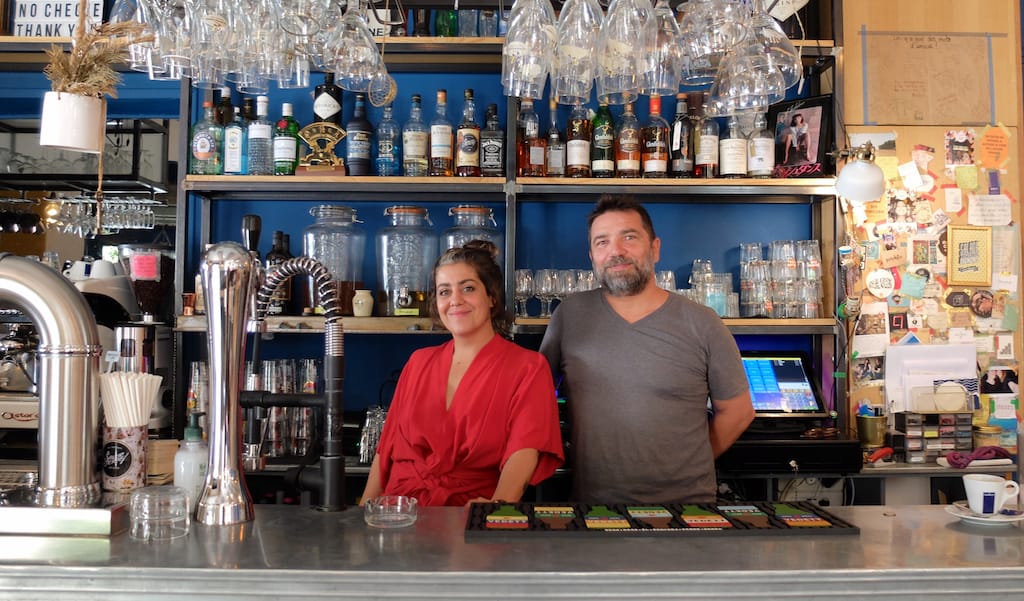Rio’s Mercado São José looks all but abandoned during the day. The windowless white building with blue trim hosts a small fruit vendor and a thrift shop during work hours. A band practices capoeira – Brazilian martial arts – occasionally on the weekends. But the market bursts with chatter and merrymaking in the evening, thanks in large part to boyish chef Bruno Magalhães and his inventive bar and restaurant, Botero.
Now 28, Magalhães wandered abroad after his college studies in Rio, taking courses on wine in Chile and tapas in Peru, doing a stint at a diner in upstate New York, and eventually working in high-profile Manhattan restaurants Double Crown and Public. But he wasn’t sold on the trendy New York gastronomy scene and he missed his native Brazil. On a trip back home to watch his favorite soccer team win a national championship, he decided to leave the U.S. behind to start anew in his own city. Back in Rio, Magalhães worked as a guide for cruise ship passengers and as a cook for executives at Brazil’s largest TV network, Globo, all the while dreaming up his own venue.
Botero, which he opened last summer, is a smiling nod to its namesake, the Colombian artist Fernando Botero, known for his characteristic paintings of roly-poly subjects – several of which are on the venue’s walls. “I chose the name Botero because he paints fat people. I serve pork belly. I don’t serve salads,” Magalhães jokes. His drink menu, meanwhile, includes homages to Latin American artists such as Frida Kahlo (tequila, Cointreau, grenadine, passion fruit and Tabasco sauce) and Tarsila do Amaral (Absolut vodka, Cointreau, green apple, passion fruit and ginger). The spirited owner can often be found in a hoodie with rolled-up sleeves, tippling amongst customers at his own bar, which in just a year has already gained a devoted following. “I like my bar; I drink here three to four times a week,” he says.
Locally said to have been the slaves’ quarters of a colonial-era plantation and later a food market for cheap staples during World War II, the Mercado is now divided into stalls in which a handful of no-frills bars operate, of which Botero is the most successful so far. With its concrete floor and checkered tablecloths that Magalhães washes at his own home, along with the open-air setup and dim lighting, Botero is anything but formal. The ambiance lends itself to loud chatter over tall, frosty, .75-liter servings of beer, which are kept cold in a type of plastic casing Brazilians call a camisinha (“condom”).
Magalhães says he appreciates the laid-back bar atmosphere so dear to I’m-in-no-rush cariocas, but that he felt Brazilian bar food – which is often stewed in cafeteria-like metal bins and gets visibly congealed as the day goes on – was in drastic need of re-envisioning. His menu is typically heavy on meat but with an emphasis on strong flavors, such as in a mango chutney served alongside thick-cut French fries or a tangy pineapple mustard (homemade by a friend of his) that livens up an order of meatballs. The stracotto em cerveja preta com alho confit is the chef-owner’s favorite, a dish of beef slowly cooked in dark beer and topped with parmesan and garlic. The popular bruschettas, topped  with quail egg and sausage bits, were derided in the local press as being too sophisticated for “bar food,” but Magalhães maintains they are nothing more than eggs on toast.
with quail egg and sausage bits, were derided in the local press as being too sophisticated for “bar food,” but Magalhães maintains they are nothing more than eggs on toast.
The menu also adds unique twists to Brazilian staples, such as in the pastel – a thin, fried crunchy dough pocket, often stuffed with cheese or ground beef – which here comes with fillings such as rabada com agrião (beef tail and watercress), queijo com cebola (salty white cheese with tender red onion) or a Rio favorite, bacalhau (cod, served with thyme and black olives). For diners who insist on eating “light” (a word Brazilians use for healthy food and pronounce “LI-chee”), a flavorful vegetarian sandwich (veggie sanduíche) on crispy bread with grilled eggplant, sun-dried tomato, hearts of palm and cheese spread is one of the less decadent items on the menu.
Botero is located in the largely residential neighborhood of Laranjeiras, also home to the governor’s palace and the headquarters of the special operations police, two institutions that drew the ire of protestors during the demonstrations that brought millions of Brazilians to the streets earlier this summer. One day in June, Magalhães watched as a can of tear gas thrown at protesters fleeing down the side streets next to the Mercado instead burst into the enclosed market space, after which he passed around vinegar and towels to his bleary-eyed customers. “I left politics behind” to go into gastronomy, says the restaurateur, who studied social sciences at the politicized Federal University of Rio de Janeiro, “but now…” His voice trails off, as he throws his hands into the air without finding the right word.
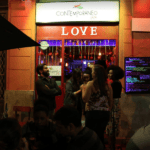 September 1, 2017 Contemporâneo Lapa
September 1, 2017 Contemporâneo Lapa
Lapa is the heart of bohemian Rio de Janeiro, a place that pulses with samba music and […] Posted in Rio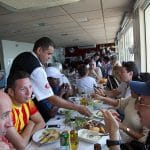 October 9, 2013 Bar Urca
October 9, 2013 Bar Urca
In a city with no shortage of postcard views, Bar Urca’s may get the title for most […] Posted in Rio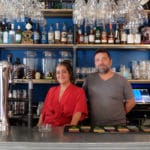 October 13, 2020 Le Parpaing qui Flotte
October 13, 2020 Le Parpaing qui Flotte
A man leans on the zinc bar, reading La Provence with his café. In wanders a helmet-clad […] Posted in Marseille
Published on July 23, 2013
Related stories
September 1, 2017
RioLapa is the heart of bohemian Rio de Janeiro, a place that pulses with samba music and the clamor of bargoers. Local musicians, artists and intellectuals (and tourists, too) flock to this old neighborhood, which during the day is best known for its rich stock of colonial-era architecture and where at night more than 200…
October 9, 2013
RioIn a city with no shortage of postcard views, Bar Urca’s may get the title for most picturesque. The eponymous residential neighborhood where the bar is located faces Guanabara Bay, where a colorwheel of boats and yachts bobble on the slow waves leading up to the seawall. Across the bay, the iconic Christ statue watches…
October 13, 2020
MarseilleA man leans on the zinc bar, reading La Provence with his café. In wanders a helmet-clad father-daughter duo, searching for sirops (a sweet cordial) to cool off after their scoot. She looks hungrily at the platter of cookies on the bar, freshly baked for that afternoon’s snack. Beside them, the bartender peels a fragrant…







































